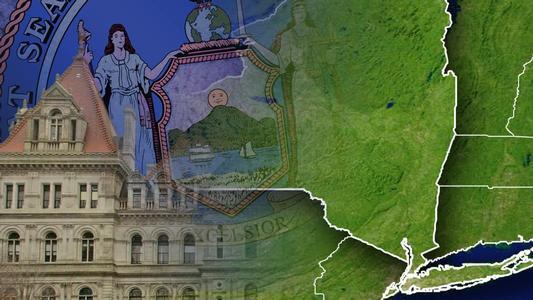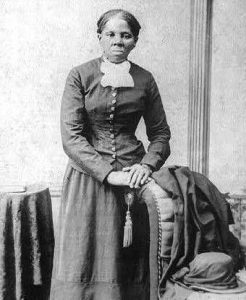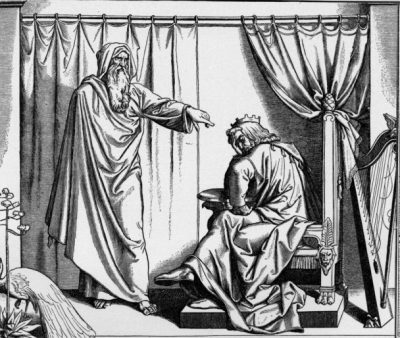
AP Ben Gorenstein credit posted by News Channel 13
On June 2, 2016, I wrote “The New York State Historian Position: Creating the New York State History Advisory Coalition.” In my post, I noted the vacancy in the position for the Deputy Commissioner for the Office of Cultural Education. The Office of Cultural Education includes the New York State Archives, the New York State Library, and the New York State Museum which includes the New York State Historian. The position is still vacant. Normally, I do not send my posts to the New York State Regents, the entity overseeing the New York State Education Department which includes all these facilities. I did that time and received a reply from Roger Tilles of Long Island, the chair of the Regent subcommittee for the Office of Cultural Education. I will send the Regents this post as well.
In that post, I also referred to a letter written to Governor Cuomo by Ken Jackson, the founder and president of the New York Academy of History (NYAH). At the previous annual meeting of the Greater Hudson Heritage Network (GHHN) in October, 2015, Ken, Lisa Keller, a colleague at NYAH, and I had lunch and discussed the Path through History project. Ken had been on the now-disbanded history advisory of that project. Its disappearance was the subject of the post “RIP The Path Through History Taskforce” a few weeks earlier on September 29, 2015.
Also as reported, during the summer of angst, another set of letter had been written by Judy Wellman and Carol Kammen, well-known scholars and advocates for state and local history, the Underground Railroad, and Women’s History Trail. Their open letters to the powers that be sought to raise issues of pressing concern for the history community. Their efforts may be considered advocacy on behalf of that normally voiceless community.
One suggestion made was the creation of New York State History Advisory Board. For example, there is a Tourism Advisory Council created by the Governor with state and non-state members. As far as I can tell, I am the only member of the public, meaning someone not on the agenda or in the tourist business, who has attended any of those meetings. The point here is there is no inherent reason why the Regents couldn’t create an official history advisory group it wanted to.
As to the members of such an advisory group, the NYAH has its own advisory board consisting of:
*Kenneth T. Jackson (Committee Chair), Barzun Professor of History, Columbia University
Carol Berkin, Distinguished Professor of History Emerita, Baruch College
Laurence Hauptman, SUNY Distinguished Professor Emeritus of History
*Lisa Keller, Professor of History, Purchase College SUNY
Susan Lewis, Associate Professor, Deputy Chair and Graduate Advisor, Department of History, SUNY New Paltz
Dr. Dennis J. Maika, New Netherland Institute.
Expanding on that list of concerned historians, the open letter of Carol and Judy was also sent to state officials:
*Rose Harvey, Commissioner, New York State Office of Parks, Recreation, and Historic Preservation
*Thomas J. Ruller, Archivist, New York State Archives
*Gavin Landry, Director, I Love New York
and to non-state government people:
*Amie Alden, Executive Chair, Government Appointed Historians of Western New York [and Livingston County Historian]
*Paul D’Ambrosio, President and CEO, New York State Historical Association
*Jay DeLorenzo, Executive Director, Preservation League of New York State
Carol Faulkner, President, Upstate New York Women’s History Group
Peter Feinman, Institute of History, Archaeology, and Education (blogger)
Lynn (Spike) Herzing, Director, New York Cultural and Heritage Tourism Network [and member Tourism Advisory Council]
*Carol Kammen, Historian, Tompkins County [and Fellow, New York Academy of History]
*Lisa Keller, New York Academy of History
Devin Lander, Executive Director, Museum Association of New York [now Erika Sanger]
*Sara Ogger, New York Humanities Council (subsequently renamed Humanities New York)
*Gerry Smith, President, Association of Public Historians, New York State
John Warren, New York History Blog
*Judith Wellman Director, Historical New York Research Associates [and Fellow, New York Academy of History]
I suggested in my post some additional individuals in the private sector with a statewide perspective to be considered for an advisory board:
Robert E. Bullock, The Nelson A. Rockefeller Institute of Government
*Bruce Dearstyne, former archivist and author/blogger/columnist
John McEneny, former municipal historian and state legislator
Bob Weible, former state historian
and representatives from the New York State Archaeological Association/New York Archaeological Council and New York State Council of Social Studies among others.
The names with the * mean those people or a deputy are now on the new New York State History Advisory Group.
At the conclusion of my post last June, I identified seven agenda items for discussion by the history advisory committee. I then asked: “Who is willing to host the first meeting? Who would attend?”
I did receive a reply from an upstate college willing to host such a meeting in August. Between 15-20 people agreed to attend including some on the list above. Others wanted to but were unavailable that day. We were very eager to have Devin participate as the new state historian. One advantage this proposed group had was since it was not part of the state government it could directly contact any government official. Once Devin declared his intention to form an advisory group through his position as State Historian, the meeting fell through and was not held.
Now we have an advisory group. As reported in New York History Blog:
The New York State Museum has announced the creation of the New York State History Advisory Group. The group is expected to meet, according to an announcement sent to the press, “periodically to advise the New York State Historian on issues related to the history field in New York State, including suggestions pertaining to local and municipal historians, academic history, historic preservation, and heritage tourism.” The Advisory Group’s suggestions and recommendations are “purely advisory in nature and are nonbinding” the announcement said.
The members of the advisory group are listed below by sector.
Academics
*Bruce Dearstyne, PhD Author and Historian Adjunct Professor, University of Maryland *Kenneth T. Jackson: PhD Jacques Barzun Professor of History & Social Science, Columbia University; Fellow, New York Academy of History
*Lisa Keller, PhD Professor of History, SUNY Purchase; Fellow, New York Academy of History
Monica Mercado, PhD Assistant Professor, Colgate University
Ivan D. Steen, PhD Director, Center for Applied Historical Research; SUNY Albany
*Judith Wellman, PhD Professor Emerita, SUNY Oswego; Director, Historical New York Research Associates; Fellow, New York Academy of History
Craig Steven Wilder, PhD Professor of American History, Massachusetts Institute of Technology; Fellow, New York Academy of History
For the non * people, I do not know Monica Mercado. Ivan Steen has been actively involved in the teaching of public history and attends various state conferences which I also attend. Former Jefferson County Historian Laura Lynne Scharer wrote a 275-page municipal historian handbook entitled “What Am I Supposed to Do?” (published in 1997) drawing on her work as one of his graduate students. Certainly it is time for an update.
I briefly met Wilder at the annual conference of the Society for Historians of the Early American Republic (SHEAR) last summer in New Haven. He spoke in a session on “Universities and the Legacy of Slavery.” Although he teaches at MIT and therefore might not seem appropriate for a New York State History Advisory Group he is from Brooklyn and attended Columbia where his teacher was Ken Jackson. He is a member of Ken’s NYAH as are several of the advisory group members.
Municipal
*Amie Alden, Executive Chair, Government Appointed Historians of Western New York [and Livingston County Historian] was the subject of a post on July 18, 2012
* Carol Kammen Tompkins County Historian; Fellow, New York Academy of History
*Gerry Smith, now the former President, Association of Public Historians, New York State [and still Broome County Historian and Binghamton City Historian]
Museums and Historical Societies
Melissa Brown Executive Director, The Buffalo History Museum
Marci Reaven, PhD Vice-President for History Exhibitions, New-York Historical Society; Fellow, New York Academy of History
I don’t know either of them although I do know people at the N-YHS. The Buffalo to New York combination is geographically inclusive. What’s missing is the voice for the smaller historical societies and museums such as from the Executive Director of MANY, Devin’s former job.
National
John Haworth Senior Executive, National Museum of the American Indian-New York City
Bob Radliff, Executive Director, Erie Canalway National Heritage Corridor
Amy Bracewell, Superintendent, Saratoga National Historical Park
The national representatives are a diverse group. John is part of the Smithsonian, in New York, and once participated in a social studies conference at my request. I was just at his site a few days ago for a program. My Saratoga Teacherhostels/Historyhostels were before Amy was there and she does get my posts. Bob is a dedicated reader of my posts and with the bicentennial of the Erie Canal coming up, this is the ideal time for him to be on the committee. I have been in contact with some canal people about a Wedding of the Waters re-enactment which I intend to write about in the future when/if the details are fleshed out.
I maintain an NPS email distribution list of 120 people with a response rate averaging 43%
Preservation
*Jay Di Lorenzo, President, Preservation League of New York State
Alexandra Parsons Wolfe, Executive Director, Society for the Preservation of Long Island Antiquities
I do not know these people and neither one reads my posts. I maintain a preservation email distribution list of 99 people throughout the state with a response rate averaging 22%.
State
* NYSOPRHP John Bonafide, Historic Preservation Office, NYS Office of Parks, Recreation,
and Historic Preservation
* I Love NY Ross Levi, Vice President of Marketing Initiatives, Empire State Development/NYS Division of Tourism
* NYS Archives James Folts, PhD Head of Researcher Services, New York State Archives; Fellow, New York Academy of History
Stefan Belinksi Community Historian The People of the Colonial Albany Live Here Website; Fellow, New York Academy of History [formerly New York State Museum]
Three of these people are members of representatives of their departments. One notes the absence of the NYS Library.
I maintain a tourism distribution list of 277 people including I LoveNY, the county TPAs, and various regional and private tour groups and operators with a response rate averaging 26%.
I maintain an NYSOPRHP and NYSED email list of 246 people with a response rate averaging 26%.
Interestingly, the heads of these departments do read my posts.
Teacher
Eva M. Doyle Retired Teacher, Historian and Columnist
* Sara Ogger, PhD Executive Director, Humanities New York
I have attended various meetings of HumanitiesNY including in their Manhattan office, received funding from them, and have a good relationship with them.
Overall, the advisory group represents a diverse range of sectors within the history community including geographically. Some of the responses to New York History Blog expressed concern about the lack of representation from the North Country and the Mohawk Valley (save for the Erie Canal). One could also add the Hudson Valley. There are limits as to how many people an advisory group can have before it becomes unwieldly. It was a challenge to get people together to host the first meeting. Since it will be meeting only “periodically,” suggesting less frequently than monthly or quarterly and more often than annually, one can see the challenges ahead for this group even if it was an official one with actual responsibilities, duties, and funding.
I hope that there will be public dissemination of the results of the meetings. I hope that there will be statewide grassroots meetings so the history community has an opportunity to express concerns that will be communicated to Devin. Naturally I hope that the advisory group will be officially recognized by the Regents/Education Department. I pledge to do my share in spreading the word to the sectors identified above as well as to the thousands of people in the history community on my distribution list.
Note: Since this post was written Marck Schaming, Director of the New York State Museum, has been named the Deputy Commissioner of the Office of Cultural Education.





